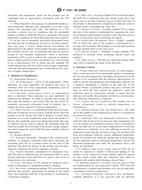Potrebujeme váš súhlas na využitie jednotlivých dát, aby sa vám okrem iného mohli ukazovať informácie týkajúce sa vašich záujmov. Súhlas udelíte kliknutím na tlačidlo „OK“.
ASTM F1416-96(2008)
Standard Guide for Selection of Time-Temperature Indicators
Automaticky preložený názov:
Štandardné Príručka pre výber času a teploty Indikátory
NORMA vydaná dňa 1.10.2008
Informácie o norme:
Označenie normy: ASTM F1416-96(2008)
Poznámka: NEPLATNÁ
Dátum vydania normy: 1.10.2008
Kód tovaru: NS-50212
Počet strán: 4
Približná hmotnosť: 12 g (0.03 libier)
Krajina: Americká technická norma
Kategória: Technické normy ASTM
Anotácia textu normy ASTM F1416-96(2008) :
Keywords:
selection, time-temperature, indicators, Effective average temperature, Shelf life, Temperature tests, Time-temperature indicators (TTI), ICS Number Code 17.080 (Measurement of time, velocity, acceleration, angular velocity)
Doplňujúce informácie
| Significance and Use |
|
Expiration dates are often marked on the packages of perishable products to indicate the presumed end of their shelf lives. Since the shelf lives of most perishable products are temperature dependent, the expiration date is determined by assuming the product will be kept within a prescribed temperature range for its entire life. A problem with this method is that there is no way to determine if the shelf life of a product has been shortened by exposure to a higher temperature. A time-temperature indicator solves this problem when attached to the package because it reaches its end point sooner when exposed to a higher temperature. In order to directly indicate the end of the shelf life, the time-temperature indicator characteristics should be matched as closely as possible to the quality characteristics of the product. When kept at the standard storage temperature for the product, the indicator should reach its end point at the same time as the product's shelf life. In addition, to determine the accuracy of the match at other temperatures, the change of shelf life with temperature should be known for both the product and the indicator. The Arrhenius relationship is a common and convenient method of describing the change of shelf life with temperature. In cases where it is not applicable, individual time-temperature points for the product may be established and an approximate correlation with the TTI obtained. When attached to the package of a perishable product, a time-temperature indicator may supplement, or in some cases replace, the expiration date code. The addition of a TTI provides a greater level of confidence that the perishable product is within its shelf life because it responds to the actual temperature conditions to which the product has been exposed. In the case of minimally processed refrigerated foods, the rapid growth of pathogenic bacteria at elevated temperatures may pose a serious health hazard even before the deterioration of the quality of the product becomes apparent to the consumer. In this case, an expiration date may be used for storage at the standard temperature, while a threshold-temperature TTI is used to indicate the exposure to temperatures at which growth becomes measurable. It is also possible to use a dual-function TTI, in which case the standard TTI would indicate the shelf life at the correct storage temperature while the threshold-temperature part would indicate the exposure to higher temperatures. |
| 1. Scope |
|
1.1 This guide covers information on the selection of commercially available time-temperature indicators (TTIs) for noninvasive external package use on perishable products, such as food and pharmaceuticals. When attached to the package of a perishable product, TTIs are used to measure the combined time and temperature history of the product in order to predict the remaining shelf life of the product or to signal the end of its usable shelf life. It is the responsibility of the processor of the perishable product to determine the shelf life of a product at the appropriate temperatures and to consult with the indicator manufacturer to select the available indicator which most closely matches the quality of the product as a function of time and temperature. Note 1—Besides time-temperature indicator, TTI is also an abbreviation for time-temperature monitor and time-temperature integrator. 1.2 Time-temperature indicators may be integrated into a Hazard Analysis and Critical Control Point (HACCP) plan. Appropriate instructions should be established for handling products for which either the indicator has signaled the end of usable shelf life or the shelf life of the product at its normal storage temperature has been reached. 1.3 This standard does not purport to address all of the safety concerns, if any, associated with its use. It is the responsibility of the user of this standard to establish appropriate safety and health practices and determine the applicability of regulatory limitations prior to use. |
Odporúčame:
Aktualizácia technických noriem
Chcete mať istotu, že používate len platné technické normy?
Ponúkame Vám riešenie, ktoré Vám zaistí mesačný prehľad o aktuálnosti noriem, ktoré používate.
Chcete vedieť viac informácií ? Pozrite sa na túto stránku.




 Cookies
Cookies
